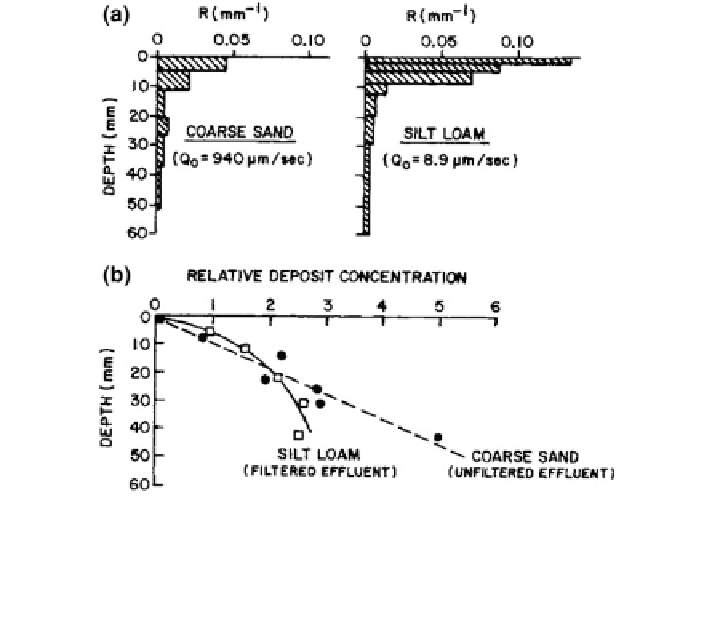Geoscience Reference
In-Depth Information
Fig. 8.42 Retention (R, defined as deposited solids per unit length of section/total added
suspended solids, mm
-1
) of suspended solids in the soil subsurface: a distribution of deposited
solids in coarse sand and silt loam and b relative deposition (defined as—ln(r/r
i
), where r
denotes initial amount of applied suspended solids and r
i
denotes measured amount of deposited
solid mass per unit length of section at each depth) of suspended solids in silt loam and coarse
sand leached by filtered and unfiltered effluents (Vinten et al.
1983
)
on the resulting change in flow rate (Fig.
8.42
). In the experiment, coarse sand was
leached with unfiltered effluent, and silt loam was leached with filtered effluent.
Passing unfiltered effluent through the coarse sand resulted in retention of 43 % of
the total suspended solids, and the flow rate declined by less than 25 %. The
relatively low retention is caused by the coarseness of the porous medium; finer
suspended solids remain highly mobile. In a heavier silt loam, a very large relative
reduction in flow rate occurred in the silt loam; after 400 mm of filtered effluent
were added, the flow rate declined to 20 % of its initial value. A very small
fraction of suspended solids was present in the leachate; most of the deposit was in
the top 10 mm of soil.
Nonadsorptive retention of contaminants can also be beneficial. For example,
oil droplets in the subsurface are effective in developing a reactive layer or
decreasing the permeability of a sandy porous medium. Coulibaly and Borden
(
2004
) describe laboratory and field studies where edible oils were successfully
injected into the subsurface, as part of an in situ permeable reactive barrier. The oil
used in the experiment was injected in the subsurface either as a NAPL or as an
oil-in-water emulsion. The oil-in-water emulsion can be distributed through sands

